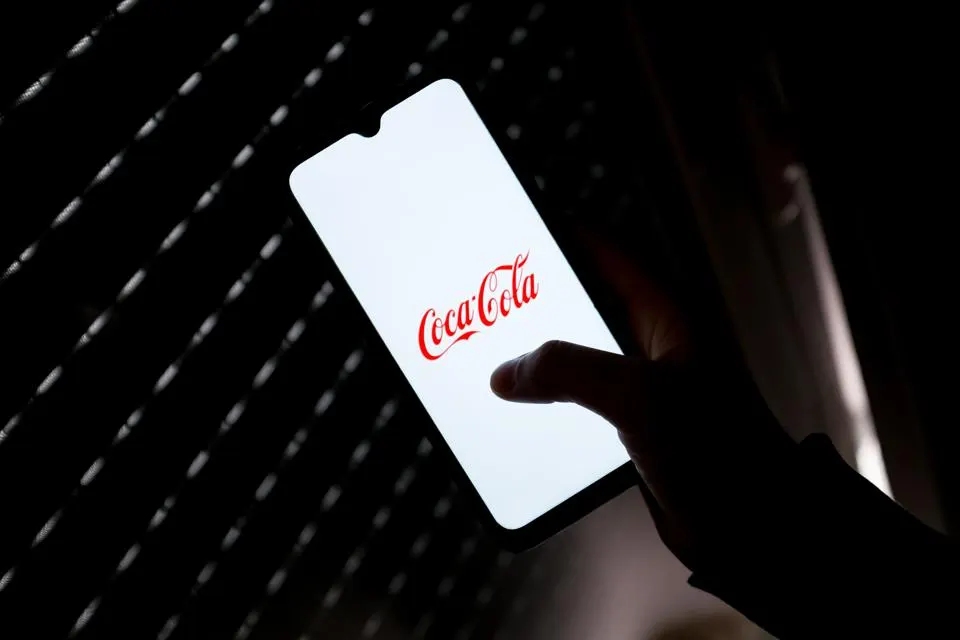Coca-Cola, a global beverage giant, presents a complex investment opportunity. This analysis examines the company’s market position, financial performance, and future prospects to provide investors with a comprehensive overview of Coca-Cola shares. As the beverage industry evolves, understanding Coca-Cola’s strategy and market dynamics becomes crucial for informed investment decisions.
Company Overview
The Coca-Cola Company (NYSE: KO) is a multinational beverage corporation headquartered in Atlanta, Georgia. With a history spanning over a century, Coca-Cola has become one of the most recognizable brands worldwide.
Key facts:
- Founded: 1892
- Products: Soft drinks, water, juice, tea, coffee
- Revenue (2022): $43 billion
- Employees: 79,000+
- Market cap: $260 billion (as of 2023)
- Operating in: Over 200 countries
Notable company milestones:
- • 1886: Pharmacist John Pemberton invents Coca-Cola syrup
- • 1892: The Coca-Cola Company incorporated
- • 1919: Company goes public at $40 per share
- • 1987: Added to Dow Jones Industrial Average
- • 2010: Acquires North American bottling operations
- • 2019: Launches Coca-Cola Energy in the US
- • 2021: Reorganizes operating model to drive growth
Top-selling brands:
- Coca-Cola
- Diet Coke/Coke Zero
- Sprite
- Fanta
- Minute Maid
- Powerade
- Dasani
- Simply
- vitaminwater
- Georgia Coffee (in Japan)
Brand portfolio evolution:
| Year | Acquisitions/Launches |
| 1960 | Minute Maid |
| 1982 | Diet Coke |
| 1992 | Powerade |
| 1999 | Dasani |
| 2001 | Odwalla |
| 2007 | Fuze Beverage |
| 2011 | Honest Tea |
| 2018 | Costa Coffee |
| 2021 | Topo Chico Hard Seltzer |
Market Situation
Industry: Non-alcoholic beverages
Global market share (2022):
- Coca-Cola: 43.7%
- PepsiCo: 25.9%
- Dr Pepper Snapple: 17.4%
- Others: 13%
Key competitors:
- PepsiCo (NYSE: PEP)
- Keurig Dr Pepper (NASDAQ: KDP)
- Monster Beverage (NASDAQ: MNST)
- National Beverage Corp (NASDAQ: FIZZ)
- Nestlé S.A. (SWX: NESN)
- Danone S.A. (EPA: BN)
Market trends:
- Shift towards healthier, low-sugar options
- Growing demand for functional/energy drinks
- Increasing focus on sustainability
- Rise of private label brands
- Expansion of ready-to-drink (RTD) coffee and tea segments

Global beverage market size:
| Year | Market Size (USD Billion) |
| 2020 | 1,542 |
| 2021 | 1,614 |
| 2022 | 1,698 |
| 2023 | 1,786 (projected) |
| 2025 | 1,972 (projected) |
Influencing Factors
Internal factors:
- Product innovation and diversification
- Marketing and brand strength
- Operational efficiency
- Pricing strategy
- Distribution network
- Digital transformation initiatives Sustainability commitments
External factors:
- Consumer preferences
- Raw material costs (sugar, packaging)
- Foreign exchange rates
- Regulatory environment
- Economic conditions
- Climate change impacts on water sources
- Geopolitical tensions affecting global trade
Financial Performance
Key financial metrics (2022):
- Revenue: $43.0 billion
- Operating income: $10.9 billion
- Net income: $9.5 billion
- Earnings per share (EPS): $2.19
- Dividend per share: $1.76
Financial trends (2018-2022):
| Year | Revenue (USD Billion) | Operating Income (USD Billion) | EPS |
| 2018 | 31.9 | 8.7 | 1.5 |
| 2019 | 37.3 | 10.1 | 2.07 |
| 2020 | 33 | 8.7 | 1.79 |
| 2021 | 38.7 | 10.3 | 2.25 |
| 2022 | 43 | 10.9 | 2.19 |
Analyst Opinions
Sarah Johnson, Equity Research at ABC Securities:
“While Coca-Cola faces headwinds from inflation and changing consumer tastes, its pricing power and product innovation should help maintain market leadership. The expansion into energy drinks and alcoholic beverages demonstrates adaptability to evolving market trends.”
Rating: Hold
Price target: $65
Michael Chen, Consumer Goods Analyst at LMN Investments:
“Coca-Cola’s sustainability initiatives and digital transformation efforts are commendable, but the company may face margin pressure due to increased costs associated with these programs. The long-term benefits should outweigh short-term challenges.”
Rating: Buy
Price target: $70
Consensus rating (based on 19 analysts):
- Strong Buy: 8
- Buy: 7
- Hold: 4
- Sell: 0
- Strong Sell: 0
Average price target: $69.36
Prospects and Risks
Growth prospects:
- Expanding in emerging markets (e.g., India, Africa)
- New product categories (energy drinks, alcoholic beverages)
- Digital transformation and e-commerce
- Strategic acquisitions
- Premiumization of existing product lines
- Expansion of Costa Coffee retail locations
Potential risks:
- Changing consumer preferences
- Increased regulation (sugar taxes, plastic packaging)
- Currency fluctuations
- Commodity price volatility
- Intense competition
- Water scarcity in key production regions
- Potential for brand reputation damage
Risk examples:
- 2004: Launch of C2 mid-calorie cola fails due to unclear positioning
- 2017: India sales decline due to GST implementation and demonetization
- 2020: COVID-19 pandemic impacts away-from-home consumption
- 2022: Suspension of operations in Russia due to geopolitical tensions
Sustainability Initiatives
Coca-Cola has set ambitious sustainability goals to address environmental concerns:
1. Water stewardship:
- Aim to replenish 100% of water used in production by 2030
- Improve water efficiency in manufacturing by 25% by 2025
2. Packaging:
- Goal to collect and recycle a bottle or can for every one sold by 2030
- Increase recycled content in packaging to 50% by 2030
3. Climate:
- Reduce carbon emissions 25% by 2030 compared to 2015 levels
- Transition to 100% renewable electricity in operations by 2030
4. Sustainable agriculture:
- Source 100% of key agricultural ingredients sustainably by 2025
Progress towards sustainability goals:
| Initiative | 2020 Progress | 2025 Target |
| Water replenishment | 90% | 100% |
| Recycled content in packaging | 22% | 50% |
| Carbon emission reduction | 9% | 25% |
| Sustainable sourcing | 58% | 100% |
How to Buy Coca-Cola Shares
Steps to purchase:
- Choose a broker (e.g. Fidelity, Charles Schwab, E*TRADE)
- Open and fund an account
- Research KO stock fundamentals and technicals
- Place a buy order (market or limit)
- Monitor your investment
Considerations:
- Commission fees
- Account minimums
- Research tools provided
- Trading platform usability
- Fractional share availability
- International market access

Comparison of popular brokers:
| Broker | Minimum Deposit | Commission | Fractional Shares |
| Fidelity | $0 | $0 | Yes |
| Charles Schwab | $0 | $0 | Yes |
| E*TRADE | $0 | $0 | Yes |
| Robinhood | $0 | $0 | Yes |
| TD Ameritrade | $0 | $0 | No |
Conclusion
Investment summary:
| Factor | Rating (1-5) |
| Financial health | 4 |
| Growth potential | 3 |
| Dividend yield | 4 |
| Competitive position | 5 |
| Valuation | 3 |
| Sustainability efforts | 4 |
Investor recommendations
Long-term investors:
Consider for stable dividend income and brand strength.
Growth investors: Limited upside potential compared to broader market, but potential in emerging markets and new product categories
Value investors: Relatively fair valuation, limited margin of safety
ESG-focused investors: Strong sustainability initiatives, but ongoing concerns about plastic waste and sugar content
Overall outlook: Coca-Cola remains a stable investment with reliable dividend growth and strong market position. However, the company faces challenges in adapting to changing consumer preferences and regulatory pressures. Its efforts in sustainability and product diversification may provide new growth avenues, but investors should temper expectations for dramatic share price appreciation in the near term.
FAQ
How often does Coca-Cola pay dividends?
Coca-Cola pays quarterly dividends, typically in April, July, October, and December. The company has increased its dividend for 61 consecutive years, making it a Dividend King.
What is Coca-Cola’s dividend payout ratio?
As of 2023, Coca-Cola’s dividend payout ratio is approximately 70%, indicating that 70% of earnings are distributed to shareholders as dividends. This high payout ratio reflects the company’s commitment to returning value to shareholders but may limit future dividend growth potential.
How does Coca-Cola’s stock performance compare to the S&P 500?
Over the past decade (2013-2023), Coca-Cola’s total return has underperformed the S&P 500. KO provided an average annual return of about 8% compared to the S&P 500’s 12% during this period. However, Coca-Cola’s lower volatility and consistent dividend growth may appeal to more conservative investors seeking stable income.
